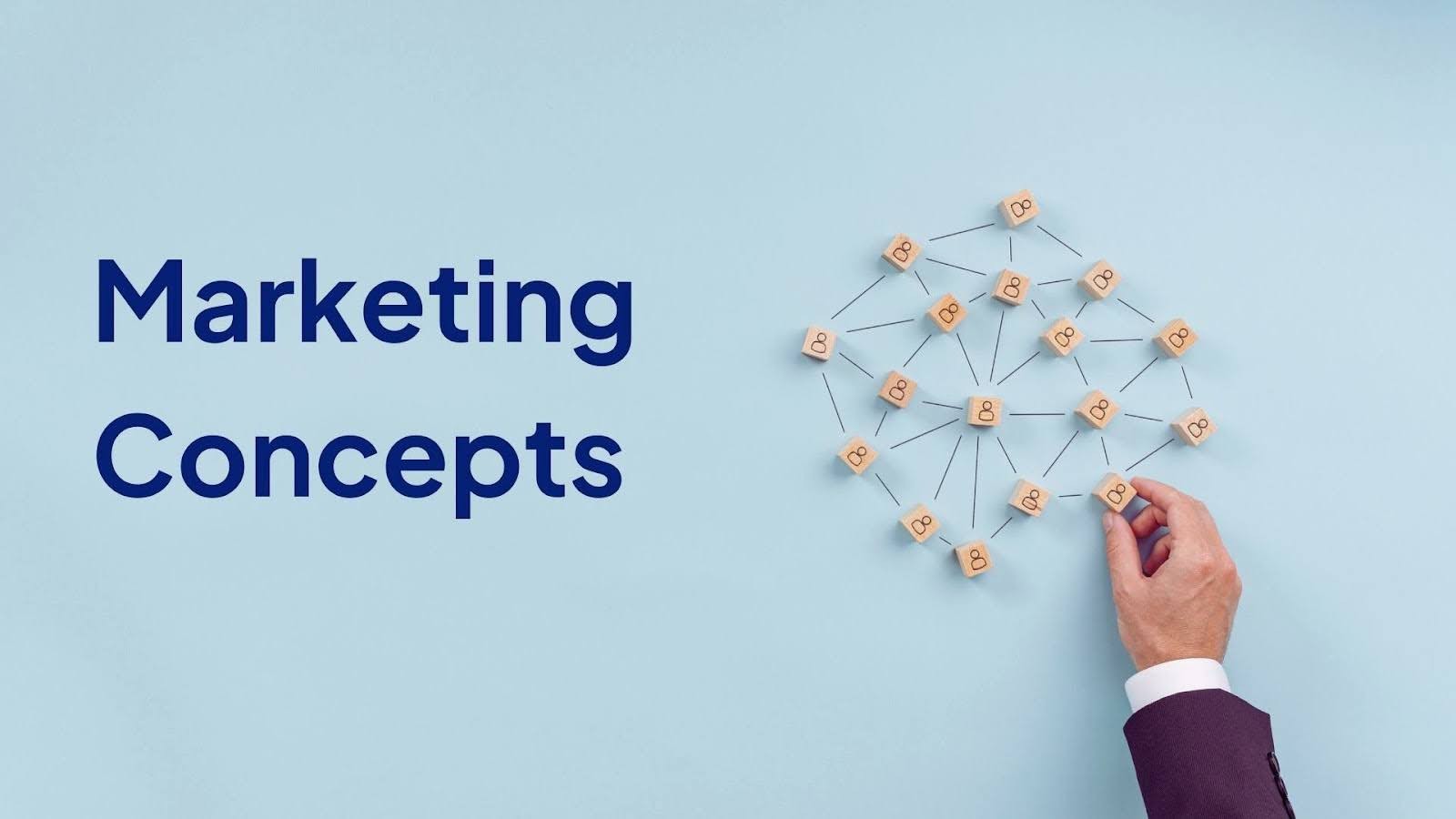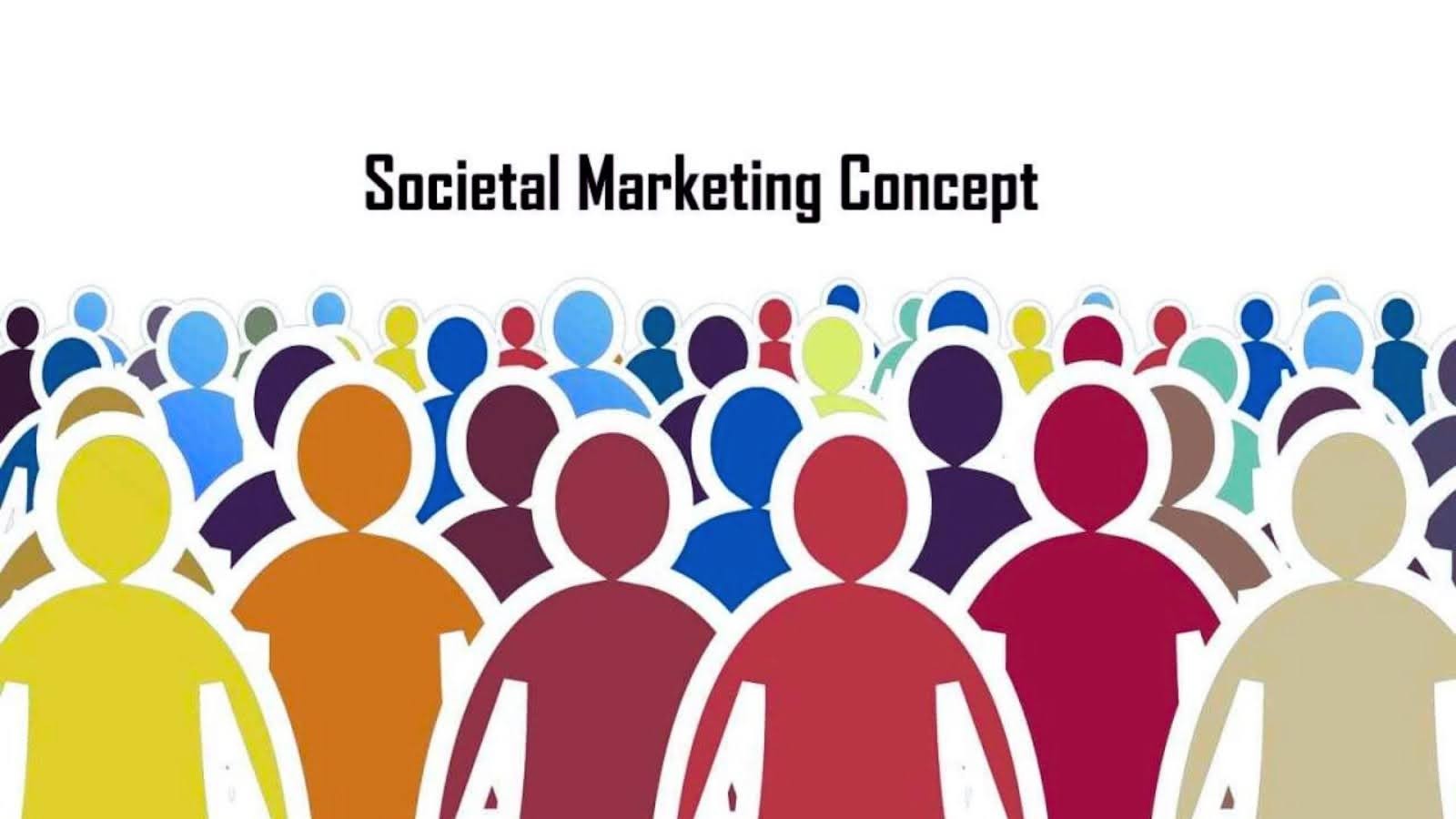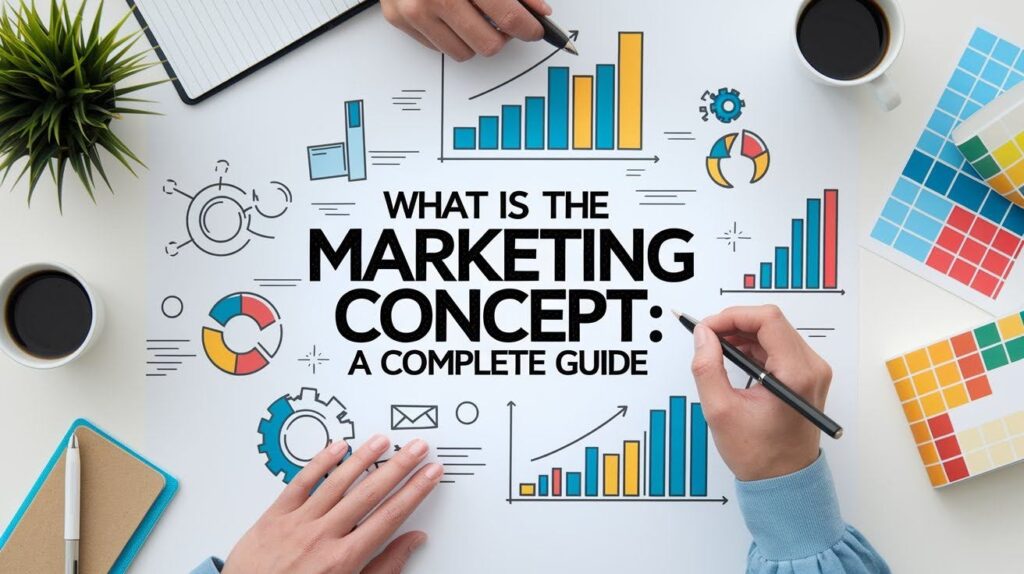Understanding the marketing concept may alter how your business is managed. This guide breaks down the five core ideas because these ideas help companies win customers and keep them coming back.
Putting customers first indeed matters, you’ll quickly learn, more than just pushing products. Knowing about what your customers actually need helps build trust. Trust comes from having that knowledge.
People do notice it when your focus is going to be to solve all of their problems. They do buy more and they do stay longer.
The main marketing concept, the five core concepts, real examples from successful companies, also clear benefits you can expect.
Additionally, this writing presents ways for using these ideas in your business.
What is the Marketing Concept?
The marketing concept is your roadmap to building a customer-first business. This philosophy puts customers at the center of everything you do. You figure out what people actually want, then deliver it better than anyone else.
Here’s the balance: you meet customer needs while hitting your business goals. It’s not charity. It’s a smart strategy. When you nail this approach, customers feel understood. That feeling builds loyalty faster than any discount ever could.
Three principles guide this concept. Understanding customer needs comes first. You listen before you sell. You research before you create. Delivering superior value follows next. Give people something worth talking about.
Make their lives easier in ways they notice. Building long-term relationships seals the deal. One sale means nothing if that customer never returns. Think years, not quarters.
These principles work together like ingredients in a recipe. Skip one and the whole thing falls apart.
The Five Core Marketing Concepts
Five different approaches shape how businesses think about customers and sales. Each one tells a different story.
1. Production Concept

Make it cheap, make it fast, make it available everywhere.
This concept focuses on efficiency and mass production. Companies believe customers want affordable products they can find easily.
Ford’s Model T changed transportation forever using this approach. McDonald’s built an empire on consistency and speed. Both made products accessible to millions.
Pros: Lower costs, wider reach, streamlined operations.
Cons: Quality sometimes suffers. Innovation takes a backseat. Customer preferences get ignored.
This works when demand exceeds supply. But in competitive markets, it’s not enough anymore.
2. Product Concept

Build something so good that people can’t resist it.
Here the emphasis falls on quality, innovation, and design. Companies pour resources into creating superior products.
Apple proves this daily. Their devices cost more but deliver experiences people love. Tesla reimagined electric cars as luxury items people actually want.
Pros: Strong brand reputation, loyal customers, premium pricing power.
Cons: Expensive to maintain. Companies sometimes assume great products sell themselves. They forget marketing still matters.
The danger? Building amazing things nobody asked for.
3. Selling Concept

Push harder, sell more, convince everyone.
This approach uses aggressive sales and promotional strategies. The goal is moving inventory through persuasion.
Insurance companies rely on this heavily. Real estate agents use it constantly. Car dealerships perfect it. They believe customers won’t buy without serious nudging.
Pros: Quick revenue boosts, clears excess inventory, builds sales team skills.
Cons: Damages trust fast. Creates buyer’s remorse. Customers feel pressured instead of valued.
This might work short-term. Long-term relationships? Not so much.
4. Marketing Concept

Listen first, deliver value, earn loyalty.
Now we’re talking about a true customer-centric approach and long-term relationship building. You solve problems people actually have.
Amazon obsesses over customer experience. Netflix learns your taste and delivers. Glossier built an entire brand by listening to beauty community feedback.
Pros: Higher customer satisfaction, repeat business, organic word-of-mouth growth, sustainable competitive advantage.
Cons: Requires significant research investment. It takes time to see results. Needs organizational buy-in at every level.
This is the gold standard for modern business. It just takes patience and commitment.
5. Societal Marketing Concept

Do good while doing well.
This concept adds ethics, sustainability, and social responsibility to customer focus. You balance profits with planetary and social impact.
Patagonia leads here. They encourage customers to buy less and repair more. They donate profits to environmental causes. They prove purpose drives profit.
Pros: Attracts conscious consumers, builds authentic brand identity, creates positive societal impact, future-proofs against regulation.
Cons: Higher operational costs. Some customers don’t care. Requires genuine commitment or you’ll get called out fast.
Greenwashing gets exposed quickly. Authenticity is everything here.
How Businesses Apply the Marketing Concept
Start by gathering real data through surveys, interviews, and analytics. Research removes guesswork and shows what people value and what they’ll pay for.
Split your audience into meaningful groups based on demographics, behaviors, or needs. Focus on segments you can serve best instead of trying to please everyone.
Design solutions around customer problems. Involve users in development and test early. Your product should feel built specifically for them.
Speak your customer’s language through channels they actually use. Communication isn’t broadcasting. It’s a conversation.
Stay connected after the sale. Provide excellent support, ask for feedback, and reward loyalty. Check in regularly and show appreciation often.
Monitor feedback constantly and track performance metrics. Adjust strategies when data demands it. Measure customer acquisition costs, lifetime value, satisfaction scores, and retention rates. Numbers tell you if your approach actually works.
Advantages and Disadvantages of the Marketing Concept
Customer focus delivers real benefits but also faces genuine challenges.
|
Advantages |
Disadvantages |
|
Customer Satisfaction and Loyalty: Happy customers return and spend more over time. They forgive occasional mistakes and become your unpaid sales force through recommendations. Loyalty costs less than acquisition. |
High Implementation Costs: Research costs money. Building relationships takes time. Customer-centric cultures require training and system changes. The upfront investment scares many leaders away. |
|
Competitive Advantage and Market Differentiation: When you truly understand customers better than rivals do, you win. Your offerings are different. Your messaging lands harder. Differentiation stops price wars before they start. |
Potential for Short-Term Focus: Sometimes companies chase immediate customer wants while ignoring future needs. They optimize for today’s preferences instead of anticipating tomorrow’s shifts. Balancing the present and future demands wisdom. |
|
Innovation and Product Development: Customer insights fuel better innovation. You solve real problems instead of invented ones. Your development pipeline stays full of ideas people actually want. Less guessing means fewer expensive failures. |
Overreliance on Customer Feedback: Customers can’t always articulate breakthrough innovations. Henry Ford’s famous quote applies: they would’ve asked for faster horses, not cars. Listening matters, but visionary thinking matters too. |
|
Efficient Resource Allocation:Resources flow toward what customers value most. Marketing budgets target the right audiences. Product teams build features people use. Efficiency comes from focus. |
Limited Effectiveness in Certain Industries: Some sectors like emergency services or utilities face less competitive pressure. Customer centricity matters less when alternatives barely exist. The concept isn’t universal even if it’s powerful. |
|
Long-Term Business Sustainability: Companies built on customer relationships survive market shifts. They adapt because they listen. They thrive because trust runs deep. Sustainability beats short-term gains every time. |
Ethical Considerations: Giving customers everything they want isn’t always right. Tobacco companies could argue they’re customer-centric. Fast fashion responds to customer demand while harming the planet. Ethics must guide customer focus, not follow it. |
Integrating the Marketing Concept with Other Frameworks
The marketing concept works best alongside proven business tools.
SWOT Analysis:
- Use SWOT to assess your internal strengths and weaknesses plus external opportunities and threats
- This analysis reveals where customer focus can create the biggest impact
- Your strengths might align perfectly with unmet customer needs
Market Segmentation:
- Divide markets into groups with similar characteristics or needs
- Apply customer-centric thinking to each segment differently
- Segmentation prevents one-size-fits-all approaches that satisfy nobody
Customer Journey Mapping:
- Trace every touchpoint from awareness through purchase to loyalty
- Identify pain points and opportunities
- Optimize experiences at each stage
- Journey maps make abstract customer focus concrete and actionable
Value Proposition Development:
- Craft clear statements about unique value you deliver to specific customer segments
- Ground these propositions in real customer needs, not assumptions
- Strong value propositions attract the right customers naturally
Marketing Mix (4Ps / 7Ps):
- Align your product, price, place, and promotion decisions with customer insights
- For services, add people, process, and physical evidence
- Every mix element should reflect customer priorities
CRM and Digital Marketing Tools:
- Technology scales personalization
- CRM systems track customer interactions
- Marketing automation delivers relevant messages at perfect moments
- Tools amplify human insight, not replace it
Competitive Analysis and Metrics:
- Benchmark your customer satisfaction and loyalty against competitors
- Track market share shifts
- Measure brand perception differences
- Competitive context shows if your customer focus actually leads or just keeps pace
Conclusion
The marketing concept isn’t only a theory but rather is the roadmap to building something that people genuinely value. I have watched how businesses can transform when they truly listen.
They also act upon customer needs to ease this. Practical steps, examples, as well as the framework are present for you to make this occur.
Begin in a minor way if that seems good. This week, apply one principle of your choosing. Your customers will notice. I want to learn how these ideas are useful for you at work.
Go ahead and drop a comment below, and I will then read it. Tell me your story.
Frequently Asked Questions
What is the marketing concept in simple terms?
It’s a business philosophy that puts customer needs first. Companies focus on understanding what customers want, then deliver superior value while building lasting relationships.
How does the marketing concept differ from the selling concept?
The selling concept pushes products aggressively to make sales. The marketing concept pulls customers in by creating products they actually need and want.
Which companies successfully use the marketing concept?
Amazon, Netflix, and Apple lead with customer-centric approaches. They research customer needs constantly and build experiences that create loyal communities.
What are the main challenges of implementing the marketing concept?
High costs for research and relationship building create barriers. Companies also struggle balancing short-term profits against long-term customer satisfaction.
Can small businesses benefit from the marketing concept?
Absolutely. Small businesses often know customers personally and adapt quickly. They can build strong local relationships and respond to feedback faster than larger competitors.

